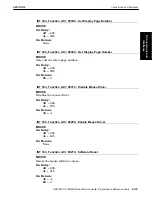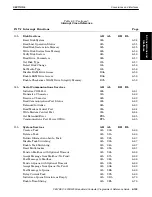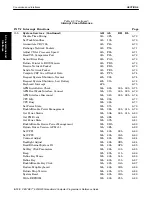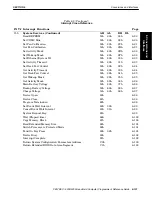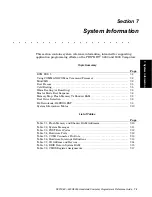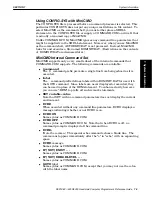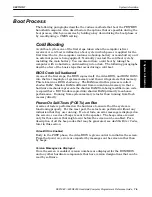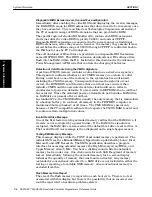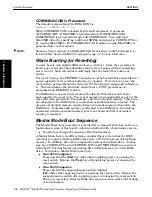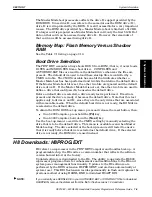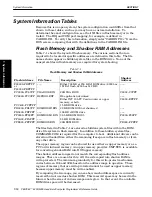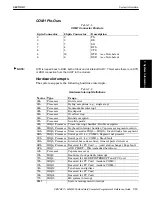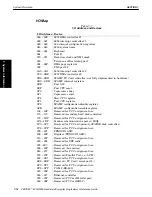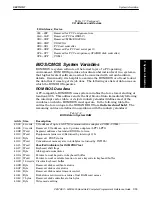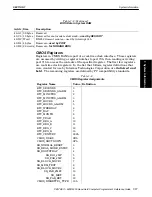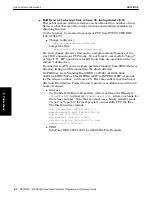
SECTION 7
System Information
PEN*KEY
R
6200/6300 Hand-Held Computer Programmer’s Reference Guide 7-5
Boot Process
The following paragraphs describe the various methods that boot the PEN*KEY
handĆheld computer. Also described are the options that are possible during the
boot process, which you exercise by holding a key down during the boot phase or
by reconfiguring a CMOS setting.
Cold Booting
A cold boot cycle is one of the first steps taken when the computer is first
received. A
cold boot
is defined as a boot cycle in which power is applied for the
first time (that is, the computer contains no backup battery or main battery and
no external power is being applied). Normally you start the cold boot cycle by
installing the main battery. You can also initiate a cold boot by taking the
computer with no batteries, and inserting into a dock. The following paragraphs
describe a few of the basic steps that occur during a cold boot.
BIOS Code is Shadowed
As one of the first steps, the BIOS copies itself, the video BIOS, and ROM DOS 5
into the first megabyte of system memory and then writeĆprotects that memory.
This is known as
BIOS shadowing
. The RAM used in this process is called
shadow RAM
. Shadow RAM is different from conventional memory in that a
hardware mechanism prevents the shadow RAM from being modified once code
is copied there. BIOS code is copied into shadow RAM primarily to enhance
performance. Running from system memory is faster than running from flash
memory directly.
Power-On Self-Tests (POSTs) are Run
A series of tests is performed on the hardware to ensure that the system is
functioning properly. For the most part, these tests are performed without any
indication that they are running. If a test fails, an error message is displayed on
the screen or a series of beeps is sent to the speaker. The beep codes are used
only for those errors that might occur before the screen can be enabled. For a
description of all the beep codes that may be generated, see
Audible Error Codes
,
later in this section.
Video BIOS is Enabled
Early in the POST phase, the video BIOS is given control to initialize the screen.
From that point on, errors are reported by messages on the screen rather than
by beeps.
Version Messages are Displayed
Once the screen is enabled, version numbers are displayed for the ROM BIOS
and any other hardware components that have version designations that can be
read by software.
7. System Information

